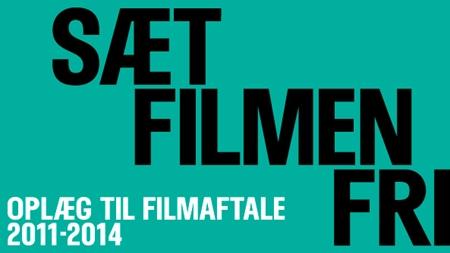ON THE WAY TO A NEW ACCORD
Powerful artistic results and wide audience support are cause for celebration, but warning lights are flashing.
"Changing consumer behaviour and technological breakthroughs present new opportunities and new challenges for disseminating Danish films.
All of Europe is seeing the advance of monoculture. The quilt of sensory impressions that used to give even a brief stop in a north German burg an exotic aura has been replaced by uniformity and regularity. The same mechanical pop music sounds from loudspeakers in Lisbon and Bjerringbro. Urban centres are lined with the same predictable chain stores. Food, dress and art all too rarely stand out. Monoculture makes us diversity deficient. The side effects of globalisations mean a farewell to durable, national imprints on culture and art. Fortunately, there are exceptions.
Danish cinema remains unmistakably Danish, having succeeded triumphantly for years now by being itself, without being wrapped up in itself. Images of Danish filmmakers on red carpets at film festivals the world over, impressive market shares and the power to bring the nation together around stories, big and small, are testimony to this success. Danish films succeed in being culture for all. Danish films have provided experiences, generated debate and made viewers question their outlook on the world. And they have done so at a level of excellence that is an inspiration, and a cause of envy, for most of the film world.
Denmark is among a very few European nations, where a broad range of films by domestic artists and producers every year gives audiences opportunities for mirroring themselves and our shared past and present in stories with local premises, without regressing into provincialism. Whether the films are seen on the big screen, on TV or via new platforms, there is a wealth of opportunities for encountering a diverse selection of Danish cinematic art. Anders Østergaard’s award-winning "Burma VJ" offers a rare look at one of the world’s most horrifying dictatorships. Ole Christian Madsen's "Flame & Citron" triggers renewed public debate on central aspects of Danish history, while generating huge admissions figures. And Lars von Trier's "Antichrist", raising eyebrows, blazes new trails for art. At the same time, pop-culture films tell everyday stories and entertain families in fierce competition with American mainstream movies. Danish films take a stand as well as entertain, and they have not been steamrolled by the onslaught of monoculture.
In a small nation, this would not be possible without a substantial talent pool, a sustained film policy, dedicated private players and a significant societal investment. The achievements of Danish films were made in interplay between the government and the market, by targeted educational efforts and a Film Act that has been called the best in the world. The opportunities for unfolding film art and doing film business – apart from the regular cyclical and structural changes – are very much dependent on the government’s film policy and the government’s engagement in cinema.
As we move towards a new Film Accord, there is continued reason to celebrate the strong artistic results and audience support, but there is also reason to heed the warning lights that have started flashing.
Status for the 2007-2010 Film Accord
Film critics have spoken of and warned about creeping uniformity. They are not alone in their concern. The DFI’s yearlong dialogue project Spørg & Lyt ("Ask & Listen"), involving 250 stakeholders from the film industry, has pointed out a number of conditions regarding film policy that, taken together with the considerable structural and technological changes in the market, require new thinking if the current success and diversity are to continue and to reverse the onset of ”œmetal fatigue”
